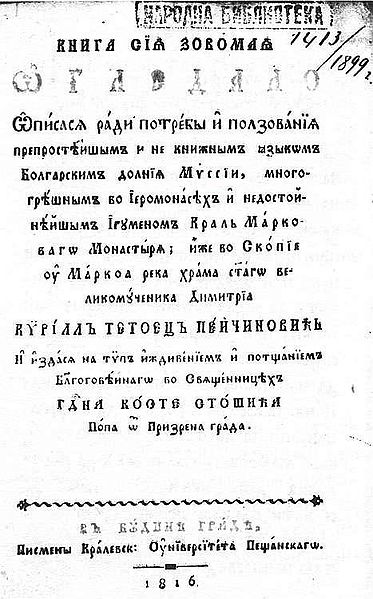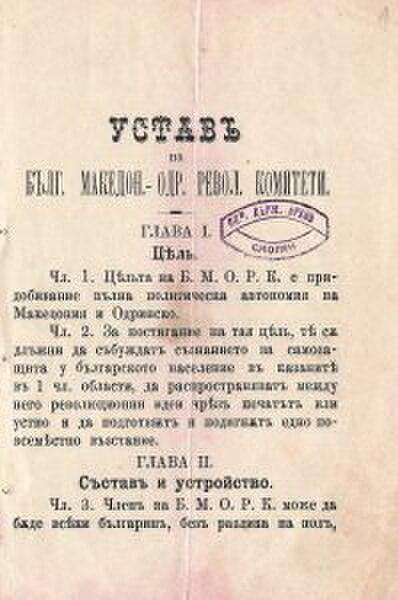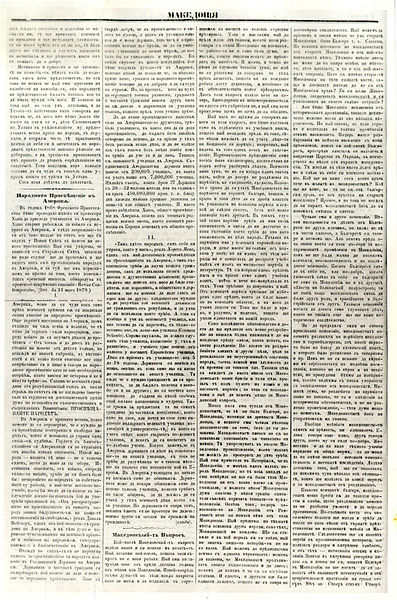Historiography in North Macedonia
Historiography in North Macedonia is the methodology of historical studies developed and employed by Macedonian historians. It traces its origins to 1945, when SR Macedonia became part of Yugoslavia. According to German historian Stefan Troebst, it has preserved nearly the same agenda as Marxist historiography from the times of the Socialist Federal Republic of Yugoslavia. The generation of Macedonian historians closely associated with the Yugoslav period, who were instrumental in establishing national historical narratives, still exerts an influence on modern-day institutions. In the field of historiography, communism and Macedonian nationalism are closely related. After the Fall of communism, Macedonian historiography did not significantly revise its communist past, because of the key role played by communist policies in establishing a distinct Macedonian nation.

The "Warrior on a horse" (Alexander the Great) monument in Skopje. Historically this area never became part of Ancient Macedonia.
Front cover of the Bulgarian Folk Songs collected by the Miladinov Brothers and published in 1861. In the early 2000s the Macedonian State Archive displayed a photocopy of the book, but with the upper part showing the word "Bulgarian" being cut off.
The Bitola inscription from 1016/1017. Originally exhibited in the local museum, it was locked away when Bulgarian scientists became aware of its content, confirming the Cometopuli considered their state Bulgarian.
The statute of the turn of the 20th century Bulgarian Macedonian-Adrianople Revolutionary Committees (later IMARO/IMRO). Its membership then was allowed only for Bulgarians. It was discovered by Ivan Katardžiev in Skopje, but its authenticity has been disputed by most Macedonian historians by obvious reasons.
Macedonian nationalism is a general grouping of nationalist ideas and concepts among ethnic Macedonians that were first formed in the late 19th century among separatists seeking the autonomy of the region of Macedonia from the Ottoman Empire. The idea evolved during the early 20th century alongside the first expressions of ethnic nationalism among the Slavs of Macedonia. The separate Macedonian nation gained recognition during World War II when the Socialist Republic of Macedonia was created as part of Yugoslavia. Macedonian historiography has since established links between the ethnic Macedonians and various historical events and individual figures that occurred in and originated from Macedonia, which range from the Middle Ages up to the 20th century. Following the independence of the Republic of Macedonia in the late 20th century, issues of Macedonian national identity have become contested by the country's neighbours, as some adherents to aggressive Macedonian nationalism, called Macedonism, hold more extreme beliefs such as an unbroken continuity between ancient Macedonians, and modern ethnic Macedonians, and views connected to the irredentist concept of a United Macedonia, which involves territorial claims on a large portion of Greece and Bulgaria, along with smaller regions of Albania, Kosovo and Serbia.

Ogledalo issued by Kiril Peychinovich and printed in 1816 in Budapest. It was inspired by a movement on Mount Athos that was fighting for a liturgical renewal within the Orthodox Church. According to the book's title page, it was written in the "most common Bulgarian language of Lower Moesia". Today geographic Macedonia was traditionally called by the local Slavic-speakers either 'Bulgaria' or 'Lower Moesia', but after the Greek War of Independence these names were gradually replaced by 'Macedonia'.
In 1844, this "Alexander Romance" was published in Belgrade, translated from Greek into Bulgarian by Hristo Popvasilev from Karlovo. This book, according to Blaze Ristovski, played an essential role in awakening Macedonianism, which in the middle of the 19th century was still in its infancy.
The Macedonian Question an article from 1871 by Petko Slaveykov published in the newspaper Macedonia in Carigrad (now Istanbul). In this article, Petko Slaveykov writes: "We have many times heard from the Macedonists that they are not Bulgarians, but they are rather Macedonians, descendants of the Ancient Macedonians, and we have always waited to hear some proofs of this, but we have never heard them. The Macedonists have never shown us the bases of their attitude."
Cover of the "General History of the Macedonian Slavs", completed in 1892 in Sofia by Georgi Pulevski. Its author who endorsed the concept of an ethnic Macedonian identity, claimed the ancient inhabitants of Macedonia were not Hellenic but Slav-Macedonian.








